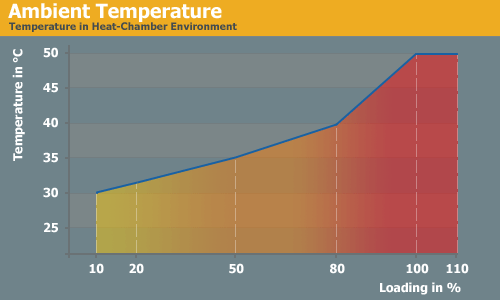Power Supply Roundup: 730W to 900W
by Christoph Katzer on November 22, 2007 3:00 AM EST- Posted in
- Cases/Cooling/PSUs
Introduction
We recently looked at lower performing power supplies ranging from 400W to 450W. While some of those offerings work well, the reality is that they're not much cheaper to produce than slightly higher rated models, so most of that market is falling to the low quality, budget manufacturers. We return this week to higher performing PSUs rated at 730W to 900W that are more suited for high-end systems running more than one graphics card. It's important to have the proper connectors - and a sufficient quantity of connectors - along with a good distribution of power across the rails. Nobody running a higher end system enjoys crashes in the middle of a gaming session, after all. We have quite a few models to test from several companies, including four 850W PSUs.
Also included is one model that officially only supports a 200VAC to 240VAC input. This PSU is for the European market, but we still found it very interesting. We are talking about the Seasonic X900, but Seasonic also serves as the ODM for other brands, several of which we have reviewed. Whether or not the Seasonic X900 shows up in the US under that name, we will almost certainly see it in some form.
Note: If you would like to know more about our testing methodology, equipment, and environment, please read our PSU testing overview.

As previously stated, we now test with an additional 10% load beyond the rated output to see how the units cope with overload situations. We begin overload testing at room temperature, and if everything checks out we move on to our stress testing "heat chamber" that tops out at 50°C. Experience indicates that while many units can stand the overload testing at room temperature, others will have difficulty with the higher temperature and overload combined. Only the top units will survive this torture test.
We're going to change the order or presentation and begin with the results first, followed by pictures and discussions of the individual units. We will sort the products according to their rated output rather than name so that similar units are in close proximity to each other.










31 Comments
View All Comments
engman - Wednesday, January 23, 2008 - link
Can you explain beter the Voltage Ripple and Noise graphs?I really cant get it! Where is the graph scale?
engman - Wednesday, January 23, 2008 - link
I was trying to find a good PSU and found this review.When you say: "The actual Power Supply Design Guide specifies that each +12V rail should not have any ripple over 120mV and the +3.3V and +5V rails should not have any ripple over ~50mV."
Means that each power rail should not go outside this interval:
11.88V < 12V < 12.12V 120mV
3.25V < 3.30V < 3.35V 50mV
4.95V < 5V < 5.05V 50mV
Correct?
How can 12.17V fall inside the specified range? "The 12V rails of the OCZ ModXStream tended to be high, but this is still acceptable as they fall inside the specified range."
4.75V is inside the specs? and 5.13?
"The 5V rails also remain within specs, but the last two units (OCZ and Amacrox) are very close to the lower boundary at 100% load."
So what are the exac boundaries, or the voltage interval for each power rail?
thanks
yelnatsch517 - Thursday, December 6, 2007 - link
I noticed the Cooler Master reviewed was the M850 ESBA modular version of the RS 850 EMBA. Seeing as how it is impossible to find that model in the US, I am wondering if the model reviewed was either a EU version or a new model Cooler Master is planning on introducing in the near future and also whether the internals of the US EMBA 850watt version are the same.jonnyGURU - Friday, December 14, 2007 - link
The Cooler Masters are identical. Cooler Master refrains from selling the modular version in the U.S. due to Ultra's patent on the modular interface and threats to sue. You CAN buy the Cooler Master modular here in the U.S. if you get it bundled with a case. I've seen it pre-installed in some Stacker units over at Newegg.stolennomenclature - Tuesday, December 4, 2007 - link
I know im getting old and the old brain isnt what it used to be, but did'nt i read somewhere about dwindling oil reserves, skyrocketing oil prices, depletion of the ozone layer, and the need to reduce energy counsumption and be the green movement? I even thought I saw a trend with cpu makers trying to lower energy counsmption of their cpu's.You would'nt think any of this stuff was real when you see the trend towards bigger fuel guzzling SUV's and now a article like this - why on earth do we need kilowatt power supplies for a PC!
If I was in government id have these things banned or else slap an enormous tax on them.
People need to wake up and smell the roses. Its obscene that a PC should need a power supply over 300 watts. Even thats extravagant.
jonnyGURU - Friday, December 14, 2007 - link
A PSU only puts out what's asked of it. So if you're PC only uses 300W, the PSU only puts out 300W. Really the only drawback here is that larger units typically cost more to buy, and neither you nor I are in the position to tell someone how to spend their money. ;)ShadowStryder - Monday, November 26, 2007 - link
Persoanally I like the new review layout.Toadster - Saturday, November 24, 2007 - link
850W of goodness for under $190http://www.newegg.com/Product/Product.aspx?Item=N8...">http://www.newegg.com/Product/Product.a...=N82E168...
recently was on sale for $119 A/R
HexiumVII - Friday, November 23, 2007 - link
Who manufactures the Antec 750?Christoph Katzer - Saturday, November 24, 2007 - link
The 850? Enhance.